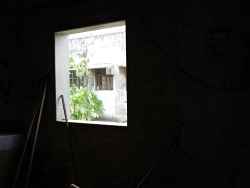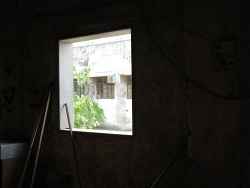At Rs. 47,995 it has a ridiculous pricing for a high end point and shoot camera. Taking the large sensor size into consideration, we just keep wondering how wonderful it would have been if the camera was an interchangeable-lens one. The PowerShot S100 is still a great camera for its price, although it comes with a smaller sensor. The Nikon V1 comes at Rs. 45,450 which is still quite high a price point but you get the option to change lenses. Canon G1X with its price clearly targets photography enthusiasts, who most likely own a DSLR or those who are comfortable with manual operational modes. The only issue we see at this price point is that it is in direct competition with some mirrorless ILCs in the market which offer you the choice to use different lenses. Just for a larger sensor we find it hard to recommend the G1X at Rs. 47,995. A pricing closer to the Rs. 40,000 mark makes this a very tempting option for enthusiasts.
In fact a mirrorless ILC was expected from Canon, specially after Nikon announced its foray into this segment with the 1 series of cameras last year. Canon instead announced its flagship compact camera – the PowerShot G1X.
On the first glance and based on the aesthetics, one does get a feeling that the G1X is just an upgraded version of the older G12 (read our review). That is only true to an extent.
We say to an extent, as the G1X is in a completely different league as far as point and shoot cameras go. With a sensor size of 18.7 x 14mm which is just 20 per cent short of the APS-C sensor, which is used in Canon DSLRs, it gets a shot in the arm when it comes to image quality. The image below will put things into perspective as far as sensor sizes go. The Nikon 1 series’ sensor size is almost half that of the Canon G1X. Thanks to the sensor size, Canon has been able to push the ISO sensitivity on this camera to a whopping 12,800 which is much greater than the 3200 limit there was on the G12.
Specifications
Before we get into the intricacies of the design, let us look at some of its specifications. The camera houses a 14.3MP high sensitivity CMOS sensor, it has a dedicated optical viewfinder and an ISO range of 100 to 12800. The 28 -112mm equivalent 4x optical zoom lens has an aperture range from F2.8 to F5.8. We found this a bit off as the PowerShot S100 (read our review) has a lens going wider at F2.0.
Design
The all-black body is very reminiscent of the PowerShot G12. It does offer some additions though. For starters, there is an exposure compensation dial on the right hand side, above which you have this mode dial. This placement of the exposure compensation dial replaces the ISO mode dial seen on the G12. The exposure dial has limits of /- 3 at increments of 1/3 stop. While you can easily rotate the exposure dial with your thumb, you will need the help of your index finger to comfortably rotate the mode dial, as it is placed at a slight height.
There are no dials on the left hand side of the the optical viewfinder, which just has a dedicated pop-out flash unit controlled by the pop-up switch. The G1X comes with a dedicated video recording button just beside the thumbrest.
The G1X has a solid metallic build with wonderful rubberised handgrip in the front as well as a dedicated thumbrest. The camera feels very good in the hand and you can easily access all the buttons on the rear side with the thumb, provided you hold the lens with your other hand. Single hand operation is good so far as you are just composing a shot and shooting, but when you want to change settings, it is best to support the lens barrel with the other hand.
Just above the handgrip, you have an ergonomically placed control dial which can be used to change the aperture in the Av mode or shutter in the Tv mode. In the Manual mode, it controls shutter by default. The other circular control dial is placed on the rear side just around the navigation pad. The navigation pad is surrounded by four buttons namely metering control button (bottom left), menu (bottom right), AF area selection point (top left) and auto-exposure lock (top right). The review button is placed on the right hand side of the viewfinder whereas the programmable shortcut key is placed on the left hand side. You can further go in the Menu and program control dial in the front as well as in the back to particular settings.
On looking through the optical viewfinder at the widest end, you do tend to see a slight portion of the lens barrel, which gets corrected as you zoom in. The 3-inch articulated LCD looks brilliant thanks to the 920k dot LCD. There is a tiny notch which holds the LCD locked to its base when either closed or completely rotated.
On clicking the Function button, the very first option gives you a flexibility to adjust highlights with the Dynamic Range Correction mode and adjust shadows with the Shadow Correction mode. Apart from these options the Neutral Density on/off choice is the only things that separate the G1X from the other higher end PowerShot counterparts. While in the AWB mode, you get the option to select between warm and cool tones by adjusting the control dial in the front. On clicking the Menu button, you get a four colour temperature option.
Performance
Like most compact cameras, the G1X employs the contrast-detect autofocus. The AF on the Canon G1X is decent enough but not as fast as we would have loved it to be. The Olympus PEN EP3 still is the bar in that regard. The G1X is faster than Nikon’s P7100 though. While shooting in the normal mode, the focus lock is quick, but switch to the Macro mode and you will tear out your hair as the camera takes its own sweet time to lock the focus. That the minimum focus distance is a whopping 20cm means that you can forget those extremely close macro shots. So macro shooting is not its strong aspect.
Another weak point of this camera is the slow continuous burst mode. At a measely 1.9fps in normal modes and about 6 shots per second in the High Busrt HQ scene mode, the G1X is nowhere in the league of the similarly priced mirrorless ILC from Nikon – the V1, which can go upto 60 fps in the Electronic (Hi) mode. What this effectively means is that the G1X is not the ideal camera if you want to shoot fast action sports.
ISO performance is where the G1X shines. As can be seen from the sample images, even at ISO 1600 one gets a clean output. Only from ISO 3200 do we start noticing minor noise at 100 per cent crops. At ISO 6400 and ISO 12800, the image quality takes a hit as noise is quite prominent. Still, when you compare the ISO 6400 output of the G1X with say Nikon P7100 or Olympus XZ1, the G1X is still much better off.

Sharpness of the threads even with darker shades is quite good
|
In the sharpness test, we got very sharp images of the threadbox, enabling you to see individual threads without any sort of distortion at ISO 200 as well as ISO 400. Even the darker shades, where its a major task to resolve the threads, the G1X’s output was quite impressive. Another example of it is seen in the portrait of our office cat. Notice how the fur and the whiskers are in sharp focus.
.jpg)
The fur and whiskers are resolved quite well Shot at F2.8, ISO 400
|
Considering the lens has a maximum aperture of f/2.8, do not expect very bokeh-licious shots. When compared with the f/1.8 of the Olympus XZ-1 or the f/2.0 lens of the PowerShot S100, for a similar shutter speed if the ISO is kept on auto mode, the G1X will generally tend to have a higher ISO than the S100 or XZ1, but thanks to its better low light performance and larger sensor, you still get better images despite a comparitively slower lens.
We liked the various features offered in the camera such as shadow and highlight correction modes, HDR modes. Shown below are test samples with the modes activated and deactivated. HDR mode takes a series of three shots and then merges them to give you a photograph which has a better dynamic range than a non-HDR shot.

No HDR
|

With HDR
|
As seen in the images on the above page, the non HDR image is slightly underexposed and it tends to blow out the road in the sunlit region, whereas the HDR images gives an optimum exposure in both sunlit and shaded areas.

Shadow Correction Off
|

Shadow Correction On/Auto
|
The shadow correction options gives more details in the shadows keeping the highlights the same. However, the DR correction and shadow correction options are not available in the RAW and RAW JPEG shooting modes, which is a letdown.
Visit page two to read more about the Canon PowerShot G1X’s performance, and our verdict…
While the optical viewfinder on the Canon G1X is good to have, it does not really help as much when compared with the electronic viewfinders seen on competing mirrorless ILCs. Apart from giving just an 80 percent coverage, the lens barrel tends to block a bit of the viewfinder real estate on the bottom left at the widest angle.
The swivel and tilt screen comes in very handy in many shooting scenarios. Visibility of the screen in bright sunlight is not an issue.
Video recording is not the best in class, but does tend to control noise well and keeps the framing to the minimum whilst panning. Detailing in the outdoor shots was quite good. It does tend to hunt for focus while zooming and panning.
Verdict
PowerShot G1X is a feature-rich large sensor compact from Canon offering some of the best high ISO performance we have seen amongst compact cameras. The sensor which is just 20 per cent smaller than the sensors seen on Canon mainstream DSLRs, offers good low light performance as well. Of course it does come with some disadvantages such as poor continuous burst mode, major focus-hunting issues in the macro mode, a lens which could have been a stop or two wider. Features such as DR and shadow correction control are good. Handling the camera is a joy thanks to the intuitive placement of the buttons and two control dials. The high res LCD screen does not throw up any issues in sunlit conditions.
However at Rs. 47,995 it has a ridiculous pricing for a high end point and shoot camera. Taking the large sensor size into consideration, we just keep wondering how wonderful it would have been if the camera was an interchangeable-lens one. The PowerShot S100 is still a great camera for its price, although it comes with a smaller sensor. The Nikon V1 comes at Rs. 45,450 which is still quite high a price point but you get the option to change lenses. Canon G1X with its price clearly targets photography enthusiasts, who most likely own a DSLR or those who are comfortable with manual operational modes. The only issue we see at this price point is that it is in direct competition with some mirrorless ILCs in the market which offer you the choice to use different lenses. Just for a larger sensor we find it hard to recommend the G1X at Rs. 47,995. Under Rs. 40,000 mark makes this a very tempting option for enthusiasts looking for a large sensor compact camera, but it will still face competition from the Olympus EP3 there.











